

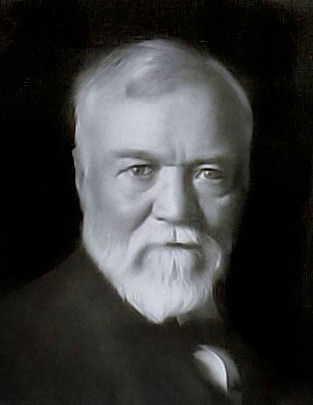
Portrait of Andrew Carnegie in old age
The magnificent library buildings featured in these pages are
a lasting architectural monument to Andrew Carnegie's generosity in providing the assorted population of Scotland with the opportunity to expand their
literacy and knowledge, irrespective of their means and position in society. Scotland was, of course, the land of Andrew
Carnegie's youth, before he emigrated with his parents and younger brother to
the United States. He certainly found his adopted homeland to be the land of
opportunity, as he later went on to become the wealthiest man in the
world.
In June 2010, I was contacted by Colin Mann who had discovered details of some of his relatives who had arrived in New York City on the S.V. Wiscasset on 14th August 1848.
When seeking passage across the Atlantic Ocean, Andrew's father, William Carnegie, found this notice in the Glasgow Herald of 16th June 1848.
TO PASSENGERS.
The splendid coppered and copper-fastened American Ship WISCASSET, 600 tons burden, William. J. Logan, Commander, who has had great experience in the trade.
This fine Vessel is upwards of seven feet between decks; has stern ports to ensure free ventilation; and affords very superior accommodation for Steerage Passengers. A limited number of Second Cabin Passengers will be taken at moderate rates.
In the first half of the nineteenth century, the arrival of power-looms in large multi-storey mills meant the end for traditional cottage industries and hand-loom weavers like William Carnegie could no longer earn a livelihood. Huge textile mills were built in the towns surrounding Glasgow, such as Paisley and Pollokshaws, were there was an abundance of coal and water to power the mechanised looms and new railways for the transportation of goods and raw materials.
This article from around the time of Andrew Carnegie's birth shows the situation a decade before the Carnegie family decided to seek their fortune in America.
This photograph from c.1900 shows the cottage where Andrew Carnegie was born in 1835. The attic bedroom to the left of the picture was his room in the cottage.

Carnegie was a frequent visitor to Scotland following his retiral from business.
He re-created an archetypical Highland castle at Skibo in the far north of the country as a family retreat away from the bustle surrounding his main home in New York City. Accompanied by his wife and daughter, he attended many opening ceremonies of Carnegie libraries in Scotland.
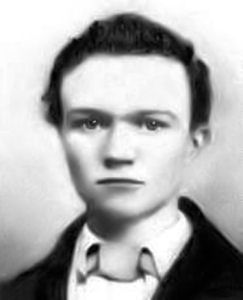
In the summer of 1848, when Andrew Carnegie and his family sailed out of Glasgow, Scotland's largest city, heading for New York City, who would have
guessed that half a century later he would fund the library systems of both cities
within months of each other?
Young Andrew's ports of departure and arrival both benefited from their Carnegie connections by being the cities with the largest number of Carnegie Libraries in both Scotland and the United States.
Among the list of passengers who had disembarked at the same time, were William and Margaret Carnegie and their two sons, Andrew and Thomas. In his autobiography Andrew Carnegie had recalled that his family had left Dunfermline on 17th May 1848, travelling to Glasgow on the first stage of their long journey to Pennsylvania.
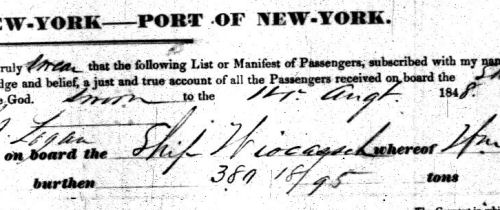

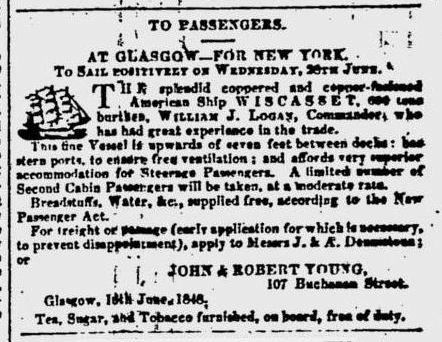
AT GLASGOW – FOR NEW YORK
TO SAIL POSITIVELY ON WEDNESDAY 28TH JUNE
Breadstuffs, Water, &c, supplied free, according to the New Passenger Act.
For freight or passage (early application of which is necessary, to prevent disappointment), apply of Messrs J & A Dennistoun; or
JOHN & ROBERT YOUNG,
107 Buchanan Street.
Glasgow, 16th June 1848.
Tea, Sugar and Tobacco furnished, on board, free of duty.
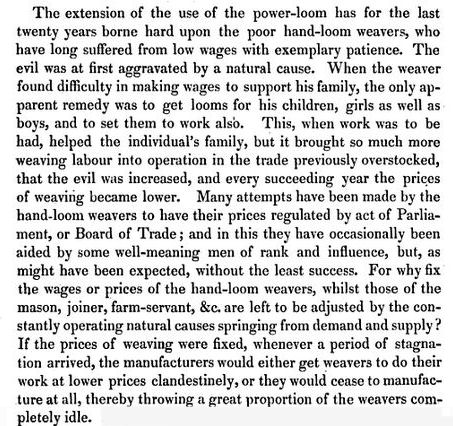
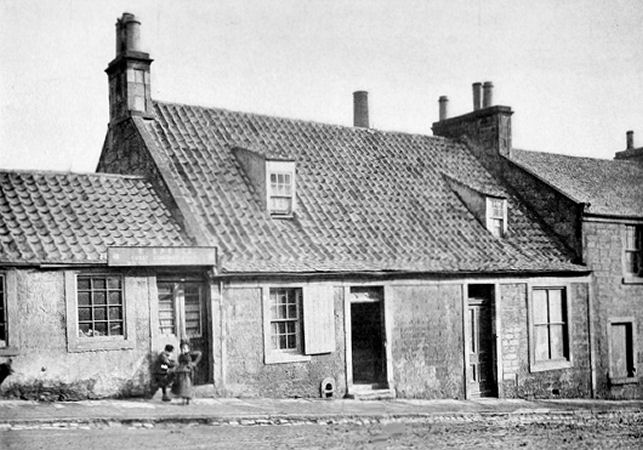
| Andrew Carnegie Lifeline | ||
| 1835 | 25th November: | Born in Dunfermline, Fife, Scotland. Elder son of William Carnegie and Margaret Morrison. |
| 1848 | 17th May: |
Carnegie family leaves Dunfermline heading for the trans-Atlantic port of Glasgow. |
|
28th June: |
Set sail from Glasgow on the S.V. Wiscasset , for New York City. | |
|
14th August: |
Arrived in New York City, en route to Allegheny, Pennsylvania. | |
| 1856 | 22nd May: |
His first share deal with Adams Express (forerunner to American Express); he continues working and investing. |
| 1867 | < |
He lives permanently in New York to be nearer to his business interests. |
| 1881 |
Triumphal return to Dunfermline as successful emigrant. Mother lays foundation stone of world's first Carnegie library. | |
| 1887 | 22nd April: |
At age of 51, following the death of his mother the previous November, Andrew Carnegie marries Louise Whitfield (aged 28). |
| 1889 |
Publishes concept of "excess wealth" in 2 essays in June & December editions of North American Review. | |
| 1892 | 1st July: |
Carnegie Steel Company formed with Carnegie's shareholding worth $14million. Workforce denied the right to belong to a trade union. |
| 5th/6th July: |
While Carnegie is in Aberdeen, Scotland, opening new library, Homestead riot occurs, leaving 10 dead. | |
| 1893 | Spring: |
Carnegie returns to the USA for the first time since the Homestead incident. |
| November: |
First Carnegie Library opens with no link to his origins in Scotland or Pennsylvania - at Fairfield, Iowa, USA. | |
| 1901 | < |
Sells his share in Carnegie Steel Co. and becomes the world's richest man. Begins giving away his fortune including world-wide donations for libraries. |
| 12th March: | Letter to New York City offering to fund branch libraries. | |
| 15th May: | Letter to Glasgow offering to fund branch libraries. | |
| 1908 | 29th August: |
Second letter to Glasgow offering additional funds to complete scheme of branch libraries. |
| 1919 | 11th August: |
Andrew Carnegie dies in Lenox Massachusetts and is buried at Sleepy Hollow, New York. |
The letter reproduced below, was given to Sir Samuel Chisholm, the Lord Provost of Glasgow, by Andrew Carnegie when the two men were guests of John Templeton, the carpet manufacturer, at his seaside home at Cove on the Rosneath peninsula. Templeton's house, like Carnegie's at Skibo, was a 19th century version of an ancient Scottish castle.
Before leaving their host, Andrew Carnegie had surprised the Lord Provost by passing the letter to him.
When the news of Carnegie's great gift to the people of the city was presented to the Council the following day it was greeted with much applause. Glasgow expessed its gratitude by awarding Carnegie with the freedom of the city on 10th September 1901 at the St Andrew's Halls.
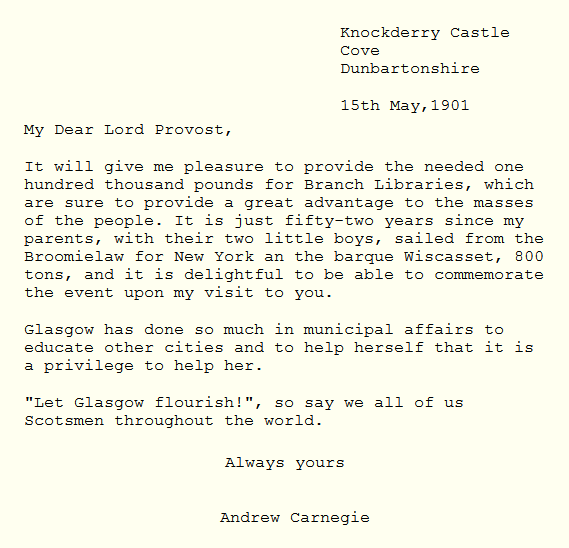
The letter shows that Carnegie still had a sentimental attachment to the city. The reference in the letter to the "Broomielaw" is referring to the docks in Glasgow. "Let Glasgow Flourish" is the city's motto.
The money was paid in instalments as the library building programme progressed. The Glasgow Herald of 19th June 1906 reported that a cheque had been received the previous day for £17,000, "being the latest instalment of his generous gift of £100,000 towards the establishment of district libraries in Glasgow."
On 12th March 1901, just two months before his letter to Sir Samuel Chisholm, Carnegie had sent a similar letter to John Shaw Billings, the Director of the New York Public Library.
Both letters were written after he had sold his share in the Carnegie Steel Company in early 1901, and became the world's richest man.
Sir Samuel Chisholm, whose formidable countenance is featured left, had become Glasgow's Lord Provost in November 1899.
Drawing of Knockderry Castle, Cove, 1897
Elder Park Library, Govan.
Elder Park Library is the only surviving Glasgow branch library which pre-dates the Carnegie Libraries. Paradoxically it is also the only local suburban library which Andrew Carnegie is recorded as ever visiting.
Elder Park library was opened on 5th September 1903 by Andrew Carnegie, who never visited any of the subsequent libraries he funded in the city, which would be opened by local dignitaries.
Plaque at Elder Park Library, Govan
Carnegie's residence at Skibo Castle, Sutherland, with the USA's 'Stars & Stripes'
Dornoch Library, Sutherland.
The local library for Carnegie's Scottish residence at Skibo was situated in the beautiful town of Dornoch, which also boasts a 13th century cathedral dating from 1224.
Being a good neighbour to the small communities situated around his Highland home at Skibo in Sutherland, Carnegie financed the building of libraries which doubled up as village halls. Funds were gifted to Dornoch Burgh Council to provide facilities for hamlets which would not normally have the population to justify them. Places like Altass, Bonar Bridge and Spinningdale had their own little libraries.
Altass Library, Sutherland.
The library and village hall at Altass in Sutherland has been recently converted into a dwelling house by Benjamin Tindall, architects, of Edinburgh. A lot of the original features have been retained such as the wooden linings to the walls of what is now the kitchen and the lounge. The original library shelves, complete with the authors' inscriptions, are still in place in the cottage which has been imaginatively named as "The Old Library"!
Tain Library, Ross & Cromarty
Another library situated close to Skibo was built in the small town of Tain. It was designed to a very basic design by the Inverness architect John Pond MacDonald and opened in 1903. The only thing which distinguishes it from nearby dwelling houses is the fancy entrance, over which there is the inscription "1903 Carnegie Free Library". The library's sheer simplicity is its main attraction.
Andrew Carnegie's personal bookplate. These were pasted into the front of the books kept in his own library.
The bookplate contains Carnegie's motto, "Let there be light" which also features in many of his libraries, either carved into the stonework or contained in decorative windows. The bookplate was given to me by Derrick Barclay, the curator of the Andrew Carnegie Birthplace Museum, Dunfermline Plaque at entrance to Stirling Central Library The plaque commerated the Carnegie's visit to Stirling in 1902, when Andrew Carnegie received a ceremonial freedom of the burgh.
Carnegie's Mansion, New York City
Although he spent much of his later years in Scotland, Andrew Carnegie still maintained a mansion in New York City.
Entrance to Carnegie's Mansion, New York City
Mid- 19th century map of Dunfermline at the time the Carnegie family emigrated to America
Andrew Carnegie's fondness for Fife and the area round his Dunfermline birthplace was shown when receiving the freedom of the nearby burgh of Burntisland on 18th September 1907, after having officially opened the new pubic library (left). He stated that "the freedom of Burntisland is most gratefully accepted as a voice from home. Upon rare occasions, when a boy, I was taken to Burntisland, which was the utmost edge of my travels."
He went on to say that the honour "will mean much more than a similar honour from much larger but more distant places." He could not have been talking about Scotland's largest city, Glasgow, where he had laid the foundation stone for the new Mitchell Library the previous day, and went on to pay the city lavish compliments!
Another library personally opened by Andrew Carnegie was in Hamilton Lanarkshire, which he visited on 17th September 1907, the same day as his trip to Glasgow, which is featured in my 'Inside the Libraries in 1907' page.
Bronze plaque at Arthurstone Library, Dundee.
After Glasgow, the Scottish city with the most Carnegie libraries is Dundee, which has five. On his third visit to the city, on 12th September 1911, to open the Central Reading Room and Ward Road Library, Andrew Carnegie was presented with a volume containing water colour sketches of his four earlier libraries which he had visited that morning. In his acceptance speech, Carnegie prophetically observed that he had no doubt that future generations would say "well, well, there were men and there were cities in that day that did pretty well". The libraries illustrated in this web site show how right he was!
A 1914 recording of Carnegie's views on wealth can be found on Youtube
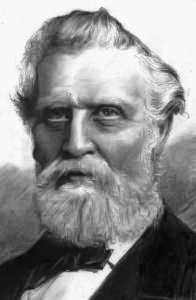
Before becoming Lord Provost, Chisholm had been behind Glasgow's application to Parliament, on 2nd June 1898, for a special Act to ensure benefits for Glasgow Corporation that went beyond the older Libraries Acts.
Following an earlier meeting to decide on this proposal, the Glasgow Herald of 7th September 1897 praised Chisholm as a person who "had initiated and carried out vast schemes for the benefit of the city".
The Council was successful in its bid and the "Glasgow Corporation (Tramways Libraries etc.) Act" received Royal Assent on 1st August 1899. This occurred with perfect timing for building the new libraries which were proposed soon after Sir Samuel received the above letter from Andrew Carnegie.
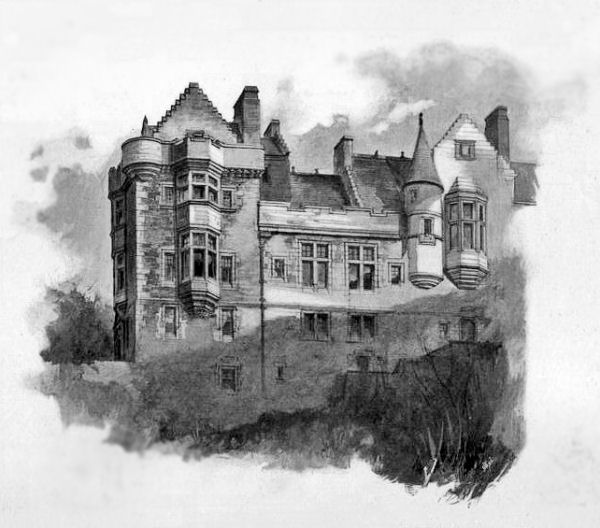
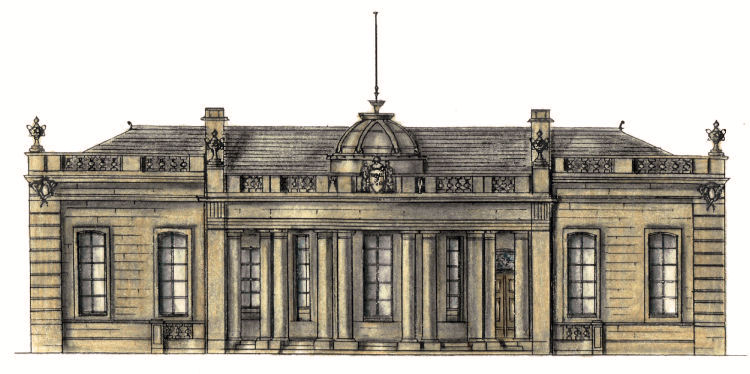
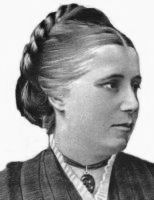
The renowned architect, John J. Burnet, carefully crafted the library to fit into its setting within the park, both of which were donated to the burgh of Govan by Mrs Isabella Elder (right), the widow of the shipbuilder, John Elder.
The Beaux-Arts style charmingly displays the continental influences of Burnet's Paris training. There are numerous columns along the curved façade creating an unusual visual effect. The Govan coat of arms tops the balustrade, above which sits a well proportioned dome. Because of the intricacy of the design, Mrs Elder's bequest of £25,000 had to be increased to £27,000 to complete the building.
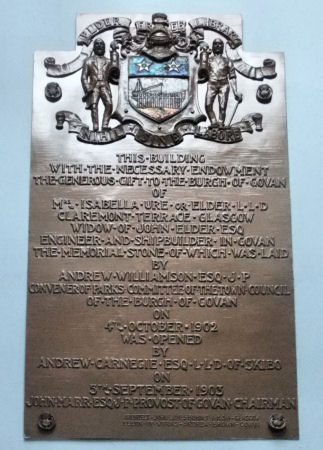
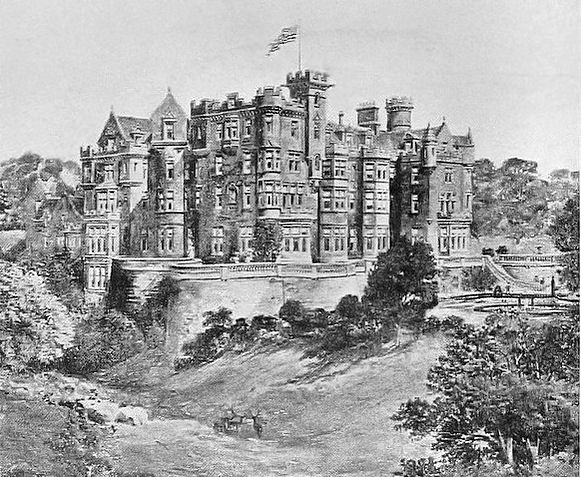
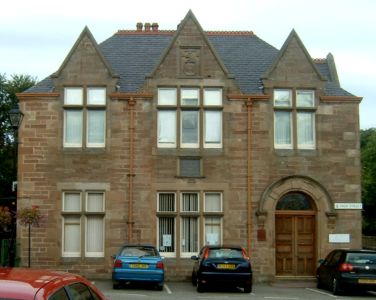
Among his gifts to the local community, Carnegie funded a lighting system for Dornoch Cathedral as well as a new organ.
The library was constructed with a subdued red sandstone in the Scottish vernacular style with a nice simple frontage. It was built in 1906.
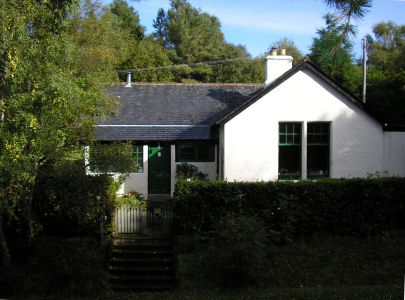
To find out more about this practice's approach to the Art and Craft of Architecture visit
www.benjamintindallarchitects.co.uk
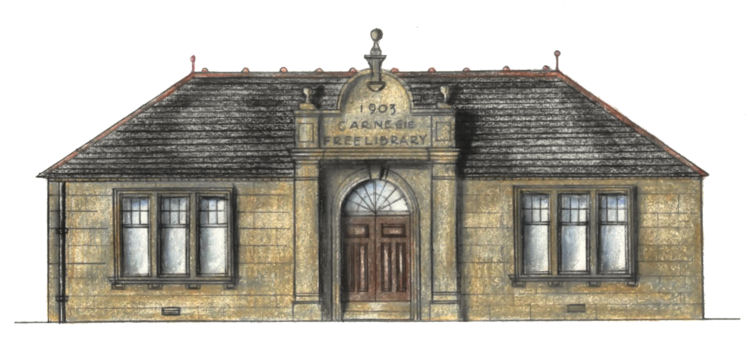
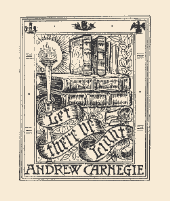
He was a voracious reader throughout his life, having been self-educated after only 3 years of formal schooling.
Ornate bookplates were the custom in Carnegie's time, in order to identify the ownership of books.

The plaque reads "This memorial stone was laid on 11th Ocober 1902, by Mrs Carnegie, wife of Andrew Carnegie Esq. LL.D, of Skibo, the donor of this building."
Carnegie attended many such ceremonies when he was living at his Scottish home at Skibo.
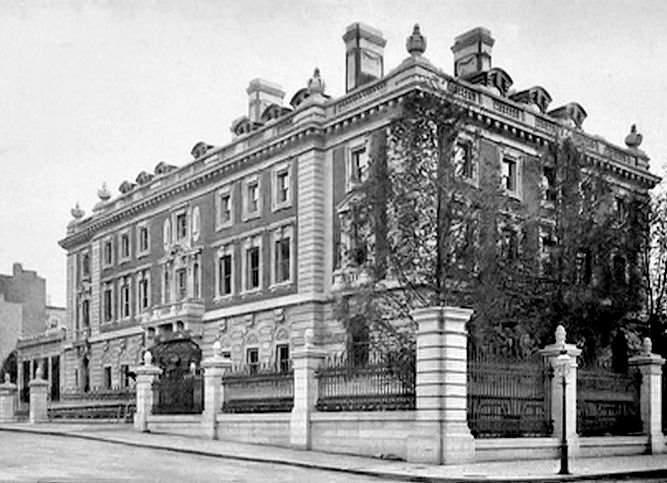
His house, illustrated above, is situated at the corner of 91st Street and Fifth Avenue. The mansion has been home to the Cooper-Hewitt National Design Museum since 1967.

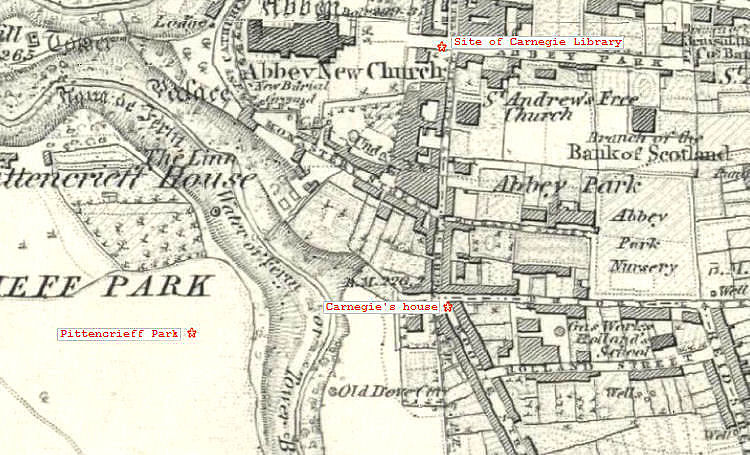
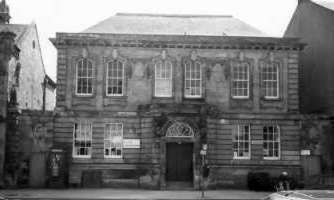
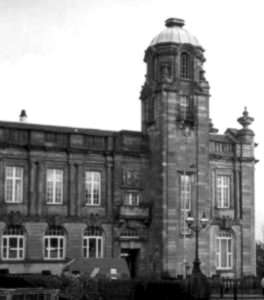
The Central Library in Hamilton is situated at the eastern end of the elaborately designed Town Hall, which was built in stages between 1906 and 1914. The Baroque inspired building has a very long symmetrical frontage with highly decorated towers at either end.
The architect, Alexander Cullen, died in 1911 and did not see the completion of the Town Hall which was officially opened by King George V on 9th July 1914, a month before the outbreak of the First World War. The fact that the King was in Hamilton on such relatively trivial business, rather than in London, provides evidence that the outbreak of the war and its dreadful consequences was not anticipated.
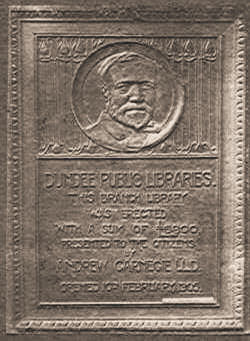
The plaque above is at Arthurstone Library in the north east of the city, which was the first to be built from Carnegie's gift of £37,000 in September 1901. The top of the plaque is decorated in art-nouveau motifs which would have been ultra-modern at the time.
The plaque reads " Dundee Public Libraries. This branch library was erected with a sum of £6800 presented to the citizens by Andrew Carnegie LLD. Opened 10th February 1905." The library had been officially opened by Carnegie in person.
Interestingly his accent is neither American or Scottish, a complete mixture that's hard to define!
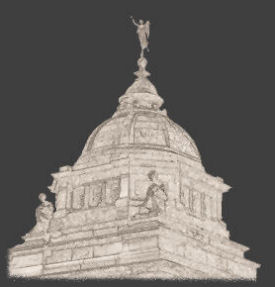 |
| |
|
|
|
|
|
|
|
|
|
|
|
|
|
|
|
|
|
|
|
|
|
|
|
|
All original artwork, photography and text © Gerald Blaikie
Unauthorised reproduction of any image on this website is not permitted.